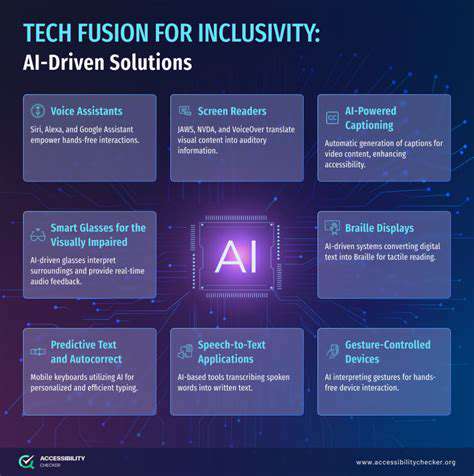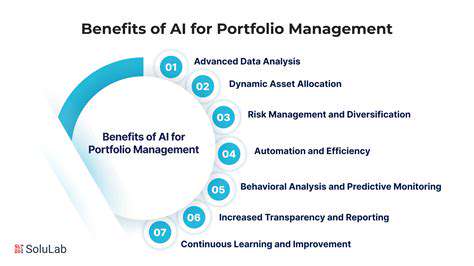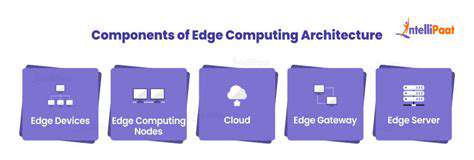
AI-Powered Diagnostics
The integration of AI into dermatological diagnostics holds immense promise for revolutionizing the field. AI algorithms can analyze images with unprecedented speed and accuracy, potentially identifying subtle skin anomalies that might be missed by the human eye. This rapid and accurate analysis is crucial in early disease detection, enabling earlier interventions and potentially improving patient outcomes.
Furthermore, AI can be trained on massive datasets of dermatological images, enabling it to learn patterns and characteristics associated with various skin conditions. This allows for more precise diagnoses and personalized treatment plans, which can be particularly valuable in cases with ambiguous presentations.
Personalized Treatment Plans
AI can play a pivotal role in creating more personalized treatment plans tailored to individual patient needs. By analyzing a patient's medical history, lifestyle, and genetic predispositions, alongside imaging data, AI can predict treatment responses and suggest optimal therapeutic strategies. This personalized approach can lead to more effective treatments and improved patient outcomes.
This approach would also be useful in determining the efficacy of different treatment modalities before patients even begin treatments, allowing clinicians to choose the best option for the individual patient.
Enhanced Efficiency and Accessibility
AI-powered tools can significantly enhance the efficiency of dermatological practices. Automating tasks like image analysis and report generation frees up clinicians to focus on patient care and complex cases, leading to improved workflow and reduced administrative burdens. This is especially beneficial in regions with limited dermatological resources.
AI also has the potential to democratize access to dermatological care by making diagnostic tools available in remote areas and to underserved populations. Real-time image analysis and consultation options can be accessed through mobile devices, bridging geographical gaps and improving patient care.
AI-Assisted Monitoring and Follow-Up
AI can be instrumental in monitoring the progress of skin conditions and tracking treatment responses over time. By analyzing serial images, AI can detect subtle changes in lesion characteristics, aiding in the assessment of treatment efficacy and adjustment of treatment strategies as needed. This continuous monitoring can significantly improve patient management and reduce the need for frequent clinic visits.
Ethical Considerations and Future Directions
As AI in dermatology advances, addressing ethical concerns is paramount. Ensuring the accuracy and reliability of AI algorithms, maintaining patient privacy, and promoting transparency in the decision-making processes are crucial considerations. Furthermore, there's a need for ongoing research and development to refine AI models and ensure their integration into existing healthcare systems in a seamless and beneficial manner.
The future of AI in dermatology is bright and filled with opportunities for innovation. Further research will undoubtedly uncover even more ways AI can be deployed to improve patient care, efficiency, and accessibility to dermatological services.
Ethical Considerations and Future Directions
Ethical Implications of AI in Dermatology
The integration of AI into dermatology presents several ethical considerations that must be carefully addressed. Ensuring the equitable access to AI-powered diagnostic tools and treatment recommendations is paramount. Potential biases within the training data used to develop these algorithms could lead to disparities in care for certain demographics. Careful evaluation and mitigation of these biases are crucial to avoid perpetuating existing health inequities. Furthermore, the potential for misdiagnosis and the accountability framework for AI-driven decisions need careful consideration. Clear guidelines and protocols are essential to navigate these challenges and ensure responsible development and deployment of AI in dermatological practice.
Data privacy and security are also vital concerns. AI algorithms often rely on large datasets of patient images and medical information, raising questions about patient confidentiality and data protection. Robust security measures and adherence to relevant regulations are essential to protect sensitive patient data. Transparency in the AI decision-making process is also vital. Patients should have access to clear explanations of how AI algorithms arrive at their recommendations, fostering trust and informed consent. These considerations are crucial for ethical development and implementation of AI in dermatology.
Future Applications and Research Directions
The future of AI in dermatology holds immense promise for improving patient outcomes. Further research into developing AI-powered systems for early skin cancer detection, particularly in underserved populations, is crucial. These systems could significantly reduce diagnostic delays and improve treatment outcomes, ultimately saving lives. Improving the accuracy and reliability of AI-powered tools for skin lesion classification, especially in challenging or atypical cases, is also a key area for future investigation. This could significantly enhance the diagnostic capabilities of dermatologists and improve the overall quality of care.
Developing AI tools for personalized treatment plans, tailoring therapies to individual patient needs based on their specific skin condition and genetic makeup, represents another exciting avenue. This personalized approach could optimize treatment strategies, minimize side effects, and ultimately lead to better patient outcomes. Moreover, the integration of AI with other medical technologies, such as wearable sensors and teledermatology platforms, could facilitate remote monitoring and enhance the accessibility of dermatological care, especially for patients in geographically underserved areas. These advancements will transform how dermatology is practiced and improve patient experience.
Long-Term Impact and Societal Benefits
The widespread adoption of AI in dermatology has the potential to revolutionize the field, leading to significant societal benefits. Improved diagnostic accuracy, earlier detection of skin conditions, and personalized treatment strategies can dramatically reduce morbidity and mortality associated with skin diseases. This technology can also enhance the efficiency of dermatological practice, allowing clinicians to focus more time on patient care and complex cases. Increased access to care, particularly in underserved communities, is another key benefit, bridging geographical gaps and improving health equity. Furthermore, AI-powered tools can potentially reduce the cost of healthcare by streamlining diagnosis and treatment processes. These factors collectively contribute to a more equitable and efficient dermatological healthcare system.
The long-term impact of AI extends beyond the direct clinical benefits. By automating certain tasks and improving diagnostic accuracy, AI can free up dermatologists to focus on more complex patient needs and research. This shift in focus could lead to advancements in understanding skin diseases, accelerating the development of new treatments and preventive measures. Ultimately, the integration of AI in dermatology holds the potential to significantly improve the lives of individuals affected by skin conditions and contribute positively to the broader healthcare landscape.











